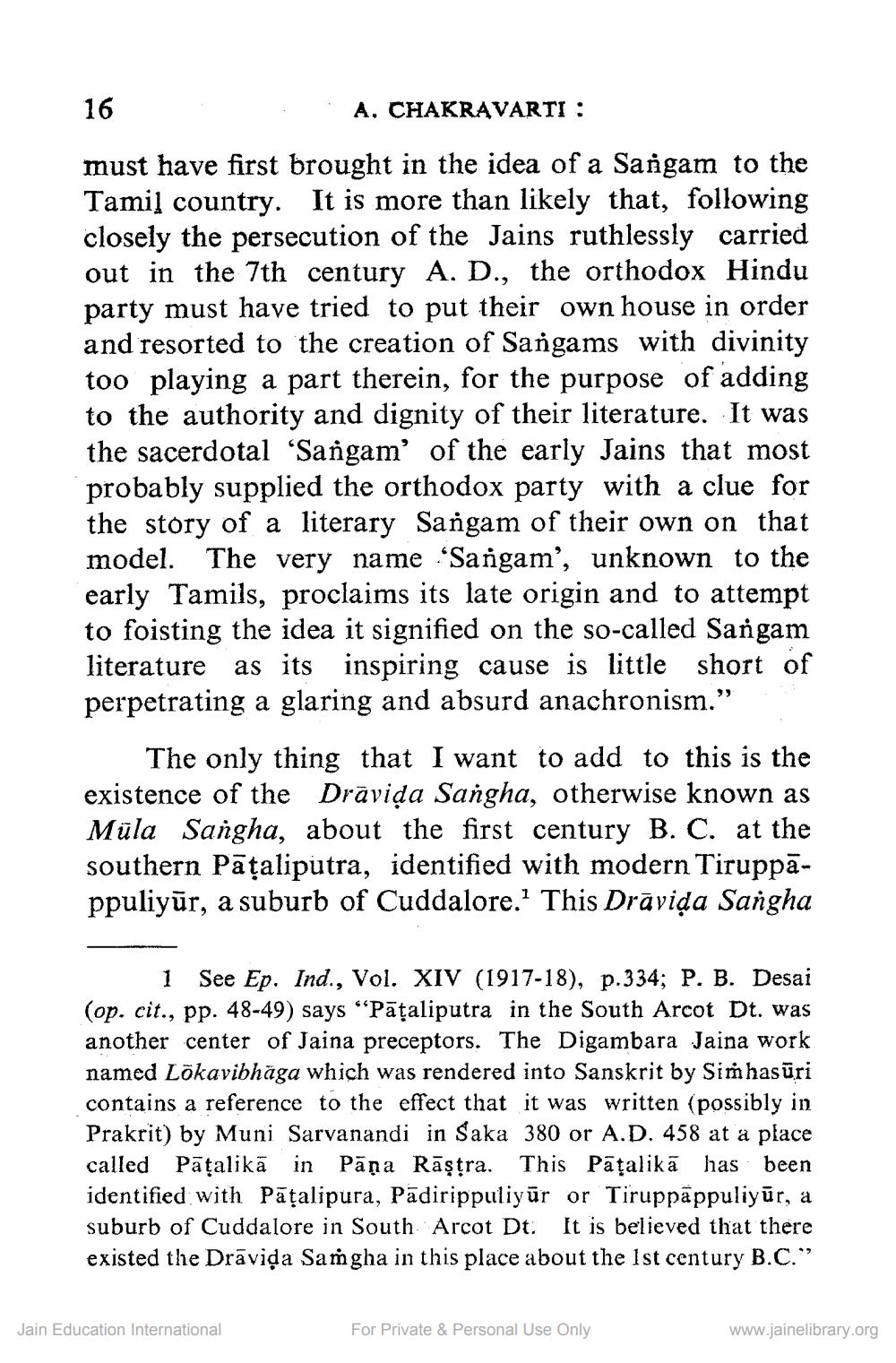________________
16
A. CHAKRAVARTI :
must have first brought in the idea of a Sargam to the Tamil country. It is more than likely that, following closely the persecution of the Jains ruthlessly carried out in the 7th century A. D., the orthodox Hindu party must have tried to put their own house in order and resorted to the creation of Sangams with divinity too playing a part therein, for the purpose of adding to the authority and dignity of their literature. It was the sacerdotal ‘Sangam' of the early Jains that most probably supplied the orthodox party with a clue for the story of a literary Sargam of their own on that model. The very name 'Sangam', unknown to the early Tamils, proclaims its late origin and to attempt to foisting the idea it signified on the so-called Sangam literature as its inspiring cause is little short of perpetrating a glaring and absurd anachronism.”
The only thing that I want to add to this is the existence of the Drāvida Sangha, otherwise known as Müla Sangha, about the first century B. C. at the southern Pāțaliputra, identified with modern Tiruppappuliyūr, a suburb of Cuddalore. This Drāvida Sangha
1 See Ep. Ind., Vol. XIV (1917-18), p.334; P. B. Desai (op. cit., pp. 48-49) says “Pāțaliputra in the South Arcot Dt. was another center of Jaina preceptors. The Digambara Jaina work named Lõkavibhäga which was rendered into Sanskrit by Simhasūri contains a reference to the effect that it was written (possibly in Prakrit) by Muni Sarvanandi in Saka 380 or A.D. 458 at a place called Pāțalikā in Pāņa Rāştra. This Pāțalikā has been identified with Pāțalipura, Pādirippuliyūror Tiruppappuliyūr, a suburb of Cuddalore in South Arcot Dt. It is believed that there existed the Drāvida Saṁgha in this place about the 1st century B.C."
Jain Education International
For Private & Personal Use Only
www.jainelibrary.org




